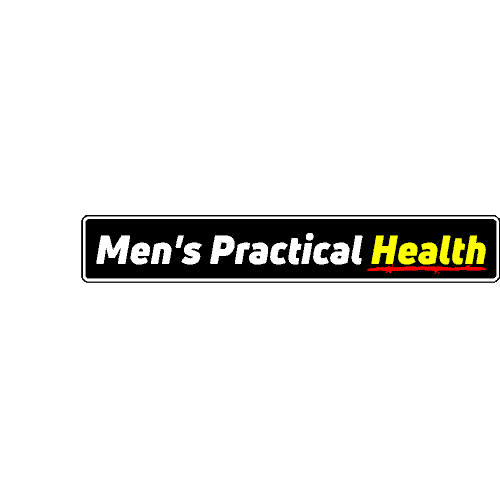Ah, the age-old gym workout question: should you train once or workout twice a week? When it comes to resistance training frequency, there’s no shortage of opinions.
So, before heading to the gym for your next bench press or pull-up, let me unravel the mystery and make it simple.
Is it Better to Train a Muscle Group Once or Twice a Week?
Research suggests training muscle groups twice a week produces superior hypertrophic outcomes (bigger gains) …
Compared to once per week.
So, the question is, why?
Well, when you work on a specific muscle group twice a week, you stimulate muscle protein synthesis more frequently. This can lead to more growth over time.
Moreover, training twice per week allows for increased training volume without overfatiguing the muscles in a single session.
So, when muscles are not as fatigued due to fewer sets per workout, it allows for more frequent training sessions with higher-quality performance.
This approach can enhance muscle growth and strength gains by enabling better focus on form and technique.
Additionally, by spreading the workload across many sessions, you can maintain a higher intensity in each session. This stops you from overtaxing your muscles.
This not only maximises muscle hypertrophy but also reduces the risk of injury that often accompanies fatigue.
So, including a two-day schedule can also help balance the workload across different muscle groups. Thus minimising the risk of overtraining and allowing for adequate recovery.
For example, instead of doing eight sets in one session, you can split the number of sets into four over two training sessions.
This balanced approach is supported by studies highlighting the benefits of higher-frequency training for greater strength.
Ultimately, training muscle groups twice per week can be an effective strategy for maximising muscle growth. Whilst also achieving a well-rounded physique.
But let’s not throw training once per week under the bus just yet.
After all, maybe you only have time to train once a week.
Is Working Out Once a Week Enough to Keep Muscle?
The good news is that working out once per week can help maintain muscle mass, especially if you’re keeping up the training volume.
Research has shown that resistance training once a week can maintain strength in young and older adults. However, there are age-specific differences in the hypertrophic effect.
So, older adults might benefit from higher training frequencies to counteract muscle loss.
But if your goal isn’t just keeping what you’ve got. You also want to build muscle (or, let’s be honest, impress at the beach). Then, once-a-week training might leave gains on the table.
Remember, progressive overload is key to maximising muscle hypertrophy.
Is Once a Week Enough to Build Muscle?
Can you build muscle with just one session per week? Yes—but only to a point. Studies examining different training frequencies suggest that twice per week stimulates muscle growth more effectively.
If you’re smashing every major muscle group with high-intensity, multi-joint exercises like deadlifts, squats, and bench presses, you will see limited results.
The problem with only training once a week is that you will need to train to failure to get the best results.
And to be honest, most people do not go to their absolute limit.
Secondly, some muscles recover quicker than others. After a gruelling workout, major muscle groups such as the legs or back will need a longer rest period than the biceps or triceps, for example.
So, if you’re not training certain muscle groups when they’re already recovered, you’re missing a window of opportunity to stimulate growth.
Now that you know the benefits of training different muscle groups twice vs. once a week, you’re probably thinking …
Is it better to train each muscle group three times a week?
If that’s what you’re thinking, then let’s clear up this question for you.
Is It Better to Lift 2 or 3 Times a Week?
This depends on the following:
- Your goals
- How much available time
- Capacity for recovery
A full-body workout twice a week can hit all the major muscle groups, which works wonders for beginners or those with time constraints.
If you want to prioritise specific muscles, then lifting three times a week or more lets you divide your workout splits.
General workout splits include:
- Upper / Lower body split
- Push Pull Legs (PPL)
- Bro split
While the evidence suggests training two times per week is significantly better than once a week. The beneficial differences between three and two times per week are less.
In other words, three times a week can give you more gains. But the percentage of how much more gains decreases with every extra day you train.
However, you can use a three-day-per-week approach to target specific muscle groups, ensuring they hit training volume goals without overdoing it.
Think of it as training smarter, not harder.
Do I Need Rest Days if I Alternate Muscle Groups?
It’s crucial that you have rest days. So, alternating between muscle groups (e.g., legs one day, chest the next) is better than training the same group every day.
This will ensure muscle groups are well-rested and recovered.
However, your central nervous system (CNS) and connective tissues also need downtime. When you train different muscle groups each day, your CNS is continually being worked on. Which means it does not get a chance to recover.
Hence, overtraining can lead to fatigue, injuries, and, ironically, stalled progress in your muscle growth.
For optimal recovery, include at least one or two complete rest days per week.
Now, these aren’t excuses to binge-watch your favourite series while eating doughnuts (tempting, I know).
Active recovery, such as going out for a walk, helps your body to recover and keeps you active at a low intensity.
If you decide to train twice per week, using a full-body workout is the way to go. This setup ensures you’re targeting every major muscle group twice and giving your body plenty of time to recover.
But if you do a workout split and work out more than twice a week, then make sure to include rest days. Your body deserves it.
Train Each Muscle Once vs Twice a Week Summary
When deciding between training muscle groups once or twice a week, science leans towards twice a week. They are the superior choice for muscle hypertrophy and strength gains.
Studies reveal that training a muscle group twice per week boosts muscle protein synthesis. In turn, this leads to greater muscle mass over time.
This approach also allows for balanced workload distribution, minimising fatigue and ensuring recovery. At the same time, targeting both major and smaller muscle groups effectively.
That said, training once a week still has its merits, particularly for maintaining strength and muscle mass.
This is beneficial for time-constrained individuals. Although it’s less effective for muscle growth. Especially if you’re not pushing to failure.
For those debating between lifting two or three times per week, three sessions offer slight advantages. But the benefits are not the same as the ones found between once vs twice a week.
Ultimately, training smarter—by aligning training volume, goals, and recovery capacity—is key.
Rest days are non-negotiable, even if alternating muscle groups during workouts.
Including rest prevents overtraining. Thus keeping your central nervous system and connective tissues healthy.
If your training frequency is twice per week, a full-body workout is a great way to hit every muscle group.
For higher frequencies, ensure proper rest and recovery to maximise results.
Whether you’re team “once-a-week warrior” or team “twice-a-week titan,”…
It’s about finding what works best for your body and schedule.
If you’re unsure, then don’t hesitate to contact me to discuss further.
FAQ
Is Training Twice a Week Enough to Build Muscle?
Absolutely! Training muscle groups two times per week is excellent for many lifters. Research-backed benefits include improved muscle hypertrophy and more balanced development across many muscle groups.
The secret sauce is balancing weekly volume and training frequency with enough rest to let your muscles recover.
Whether it’s full-body workouts or a well-planned workout split, consistency beats overkill every time.


